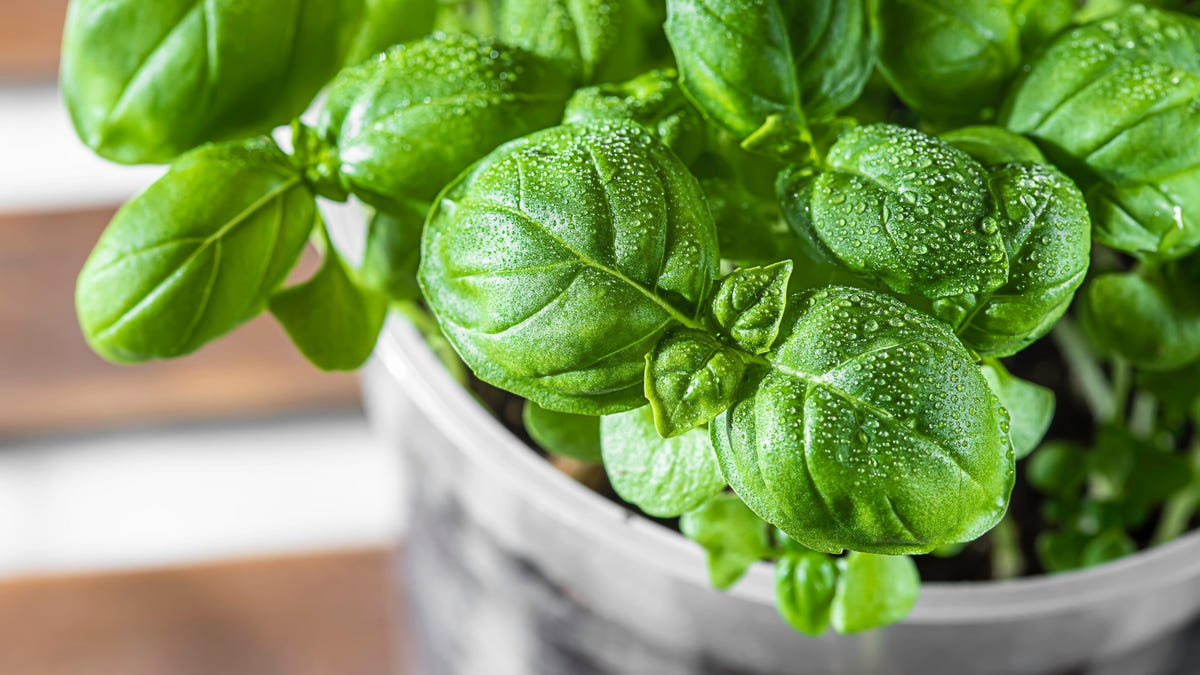How to Keep Potted Herbs Alive Inside All Winter

I almost never buy fresh herbs from the store unless I really need to, but when I have them right outside my garden door during the warmer months, I use them everywhere. However, when things cool down, you can keep fresh herbs on hand by growing them inside, but it’s not without its challenges. The little potted versions you see in grocery stores like Trader Joe’s are tempting, but people quickly realize that keeping these potted plants alive is difficult. Here are some tips to help you extend the life of your potted herbs so you can enjoy them all winter long.
How to Choose the Herbs You’ll Grow Inside
Some herbs, which are hardier, thrive outdoors all winter. Winter thyme and rosemary overwinter well; oregano can be pulled out all winter, even dry; even some types of parsley can remain alive during the coldest months. Focus on more delicate herbs such as dill, cilantro and basil. When choosing plants, look for plants with large, fluffy leaves, not the largest plants. You want to avoid those that are going to set seed, so avoid those that have flowers and even those that have thin leaves at the top, which is a sign that they are going to set seed. You want strong stems most, but avoid diseased leaves or any plants whose stems are a tangled mess.
Thin out the seedlings and replant them.
The farms that grow these little pots seed them, so where there should be one basil plant there are twenty or more. They do this to make the pots look fuller, but all those seedlings competing for resources mean the plants can’t grow. So, the first step is to separate the seedlings and place them in other pots. You can buy four-inch pots relatively cheaply online or use pots you already have. You need to remove the entire plant from the pot and then carefully separate the roots, as if you were breaking up knots in your hair, gently releasing the roots.
Each four-inch pot should contain only one or two seedlings. While it may seem like a pain, don’t feel bad about composting a lot of extra seedlings. Use herbs and then simply compost the excess stems. Make sure you replant in potting soil and not raised soil. Now water the new seedlings by giving them a sip of water. Don’t drown them, though: you want moist, not wet, soil.
Transplanting is a real stress on plants, so you need to give them a day without strong sunlight to allow them to adapt. They should be at a moderate temperature (60-80 degrees), as close as possible to the temperature in which you bought them. Once they have had a day to recover, you can move them to an area with direct light near a window.
Feed and water the plants regularly
Knowing when to water is really important. As your plants adjust to their new pot and home, they may become stressed and drop leaves. Don’t lose hope. This is a natural reaction; this does not mean that the plant died. Don’t overreact and water them to death. Just give them a day or two to recover. When the plant is dry, it’s time to water. Water until it starts to protrude from the bottom of the pot, then allow the plant to drain and dry out. Conversely, I like to use water saucers under pots : I simply leave a little water in them, place the pot in the water and let the plant absorb as much water as it needs.
Every two weeks I add a small amount of fertilizer such as Miracle Grow to the water. You can find plant food at any garden center; just follow the instructions on the bottle.
To keep herbs alive, use them.
A mistake people often make with herbs is not taking them seriously enough when harvesting them. If you want the herbs to stay in place, you will have to grind them frequently. Not an easy clip, but a real chop . This will force the plant to focus on growing leaves rather than flowering and seeding. Your stems will become bushier and stronger, and as long as you keep this up, you can extend the life of your plant quite reasonably. Some herbs, like cilantro and dill, are more prone to dropping, so they won’t last forever, but they aren’t designed to do so. These are annuals, not perennials. So, once that happens, just start over with a new plant at the grocery store.